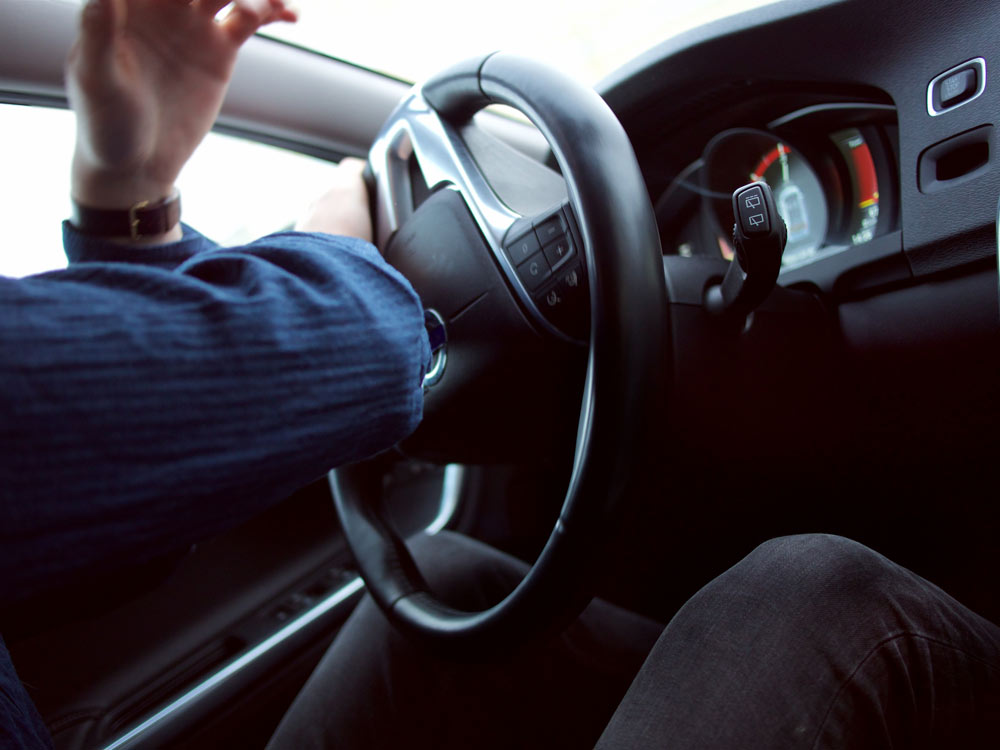At Allen & Allen, we often help clients recover financial compensation after they’ve been hurt in car accidents. One of the first questions we get is whether the at-fault driver has insurance—and surprisingly, in Virginia, not everyone does.
If you’ve been injured in a crash, or you’re wondering what protections you really have on the road, you may wonder, “Is car insurance required in Virginia?"
The answer is yes and no. Virginia is one of only a few states that allows drivers to drive without having auto insurance—with some stipulations.
Read on to learn more about Virginia car insurance laws, the risks of driving without coverage, and how to protect yourself financially.
If you suffered injuries or lost a loved one in a Virginia car crash someone else caused, contact a abogado de accidentes automovilísticos near you immediately for a free consultation.

Do you have to have car insurance in Virginia?
You might assume every driver in Virginia needs car insurance, but the law says otherwise.
Is auto insurance required in Virginia? Technically, no. Virginia is one of the few states that doesn’t mandate car insurance—as long as you comply with Virginia DMV regulations as of July 2024 when registering your vehicle.
However, that doesn’t mean you’re free from financial responsibility if you cause an accident. While you won’t face criminal penalties for not having insurance, you are still personally liable for any injuries or damages resulting from a crash.
Paying the fee under Virginia DMV regulations as of July 2024
Bajo Código de Virginia § 46.2-706, drivers who choose not to purchase auto insurance can comply with Virginia DMV regulations as of July 2024. These regulations permit legal driving without insurance upon meeting specific requirements. However:
- It is not insurance.
- It offers zero protection if you cause or are involved in an accident.
- You will be personally liable for any damages.
In other words, you’re driving without a safety net.
What are the minimum auto insurance requirements in Virginia?
If you decide to carry car insurance in Virginia, the law sets minimum coverage amounts that your policy must include. These are designed to offer a basic level of protection for injuries or damages you may cause to others in a crash. As outlined in Virginia DMV regulations as of July 2024, keep in mind—these limits are low compared to actual accident costs, and they may not fully protect you in a serious collision.
Virginia liability insurance requirements
Under Virginia law, the minimum auto insurance requirements in Virginia include:
- $25,000 for bodily injury or death per person
- $50,000 for total bodily injury or death per accident
- $20,000 for property damage per accident
This type of coverage is called liability insurance, and it pays for injuries and property damage that you cause to others—not for your own injuries or vehicle damage.
How these limits work
Let’s say you cause a crash that injures two people and totals another driver’s vehicle. Here’s what the minimum coverage pays:
- Up to $25,000 for each injured person
- No more than $50,000 total for all bodily injuries in that one accident
- Up to $20,000 for the vehicle or property damage
If the actual medical bills or repair costs exceed these amounts, you’re responsible for the difference. That could mean lawsuits, wage garnishment, or loss of your assets if a judgment is entered against you.
Why the Minimum Might Not Be Enough
While these minimum limits satisfy legal requirements, they often fall short in real-world situations—especially when:
- Multiple people are injured
- Expensive vehicles are involved
- Property damage exceeds $20,000
- Medical treatment includes ER visits, surgeries, or rehab
With hospital bills alone often topping tens of thousands of dollars, carrying only the minimum coverage puts your finances at serious risk.
Recommendation: Go beyond the minimum
To truly protect yourself and your family, most insurance professionals recommend higher liability limits, along with additional coverages like:
- Collision and comprehensive coverage (for your own vehicle)
- Uninsured and underinsured motorist coverage (UM/UIM)
- Medical payments (MedPay) to help cover out-of-pocket costs
The bottom line? While Virginia allows minimal coverage, it’s wise to carry more than the bare minimum—especially when the consequences of an underinsured claim can be devastating.
Property damage: The overlooked risk
Many drivers focus on medical bills after a crash, but property damage claims can be just as costly. Under Virginia law, the minimum required property damage coverage is $20,000.
That might cover a dented fender—but not a total loss, commercial vehicle, or infrastructure damage. We’ve handled cases where clients were hit and run off the road into a highway sign support post. Replacing that kind of public infrastructure can cost well over $20,000.
If your policy limit stops there, you’ll be expected to pay the difference.
¿Qué pasa si una persona que conduce sin seguro me lastima?
¿Qué sucede si se ve involucrado en un accidente automovilístico con una persona que no tiene seguro y la colisión es culpa de ellos? Si tiene seguro de automóvil en el vehículo que conduce, en Virginia también puede tener una cobertura llamada "cobertura de automovilista sin seguro". La ley de Virginia dice que si compra un seguro de automóvil, automáticamente obtiene cobertura de automovilista sin seguro a menos que rechace específicamente la cobertura. La cobertura de automovilista sin seguro (o "cobertura UM") le brinda cobertura si la persona que causó el accidente y sus daños no están cubiertos por una póliza de seguro de automóvil activa. Según la ley de Virginia, la cobertura de automovilista sin seguro tiene los mismos límites que la cobertura de responsabilidad civil por lesiones corporales. Si solo llevas Virginia requería una cobertura mínima de $25,000 y la persona que causó sus daños no está asegurada y no tiene activos, lo máximo que probablemente recuperará es $25,000, incluso si sufrió una lesión catastrófica.
¿Qué pasa si una persona que no tiene suficiente seguro para cubrir mi pérdida me lastima?
Su propia póliza de seguro de automóvil también puede protegerlo si un conductor culpable lo lastima si no tiene suficiente cobertura de seguro. Según la ley de Virginia, existe una cobertura de seguro que lo protegerá en tal situación. Esa cobertura de seguro se denomina "cobertura de automovilista con seguro insuficiente". La cobertura de automovilista con seguro insuficiente (o "cobertura UIM") también se incluye en su póliza si tiene seguro de automóvil, a menos que lo rechace específicamente. La cobertura de UIM está destinada a protegerlo de aquellos que pueden no haber comprado la cobertura suficiente para pagar su reclamo en su totalidad. Es un beneficio para usted haber adquirido límites de seguro más altos que los de la persona que causó la colisión.
Por lo tanto, a los efectos de pagar su reclamo, es como si la otra persona tuviera el mismo límite que usted. Al igual que con la cobertura de UM, los límites de su cobertura de UIM son los mismos que los límites de responsabilidad de su póliza de seguro de automóvil. Por ejemplo, suponga que sufre lesiones en un accidente automovilístico causado por otra persona, y sus lesiones requieren que lo mantengan en el hospital durante veinte días y, como resultado, tiene una factura de hospital de $100,000. Si la persona que causó el accidente solo tiene $25,000 de cobertura, ese es el límite que pagará su compañía de seguros y es posible que usted se quede atascado con el resto de la factura. Sin embargo, si tiene un límite de seguro de automóvil de $100,000, entonces la compañía de seguros de la otra persona pagará los primeros $25,000 (su límite) y luego su compañía pagará $75,000 para compensar la diferencia entre la póliza de la persona con seguro insuficiente y su póliza. Recupera $100,000 y es como si la otra persona tuviera un límite de $100,000 porque esa es la cantidad que puede recuperar.
Los bajos límites de seguros de Virginia hacen que sea extremadamente importante seleccionar un seguro de automóvil suficiente para proteger su bienestar financiero. Sin la cobertura suficiente de UM / UIM, podría tener que manejar las facturas médicas y otros costos por su cuenta, sin el beneficio de un seguro.
Se aplican los mismos principios con respecto a los daños a la propiedad. Hable con su agente o compañía de seguros para asegurarse de que está protegido. No se deje atrapar "expuesto" o sin suficiente cobertura de seguro de automóvil para protegerlo a usted ya su familia.
Nota del editor: muchos vehículos valen más que el límite mínimo de $20,000 para cobertura de daños a la propiedad. Si daña el vehículo de otra persona y los daños exceden $20,000, entonces sus bienes personales están “expuestos” por la diferencia. Si se sale de la carretera y daña la propiedad de otra persona, el daño puede exceder el límite de $20,000. He tenido varios casos en los que alguien causó un accidente y obligó a otro conductor a salirse de la carretera para apoyarse en un gran letrero de la carretera. El reemplazo del soporte y el letrero puede exceder fácilmente $20,000.
Injured in an accident? Allen & Allen can help
If you’ve been injured in a crash—whether the other driver had insurance or not—you don’t have to deal with the stress and confusion alone.
Allen & Allen has helped thousands of injured Virginians recover the compensation they deserve. We understand the laws, we know the insurance loopholes, and we fight for your rights. Let us handle the legal details so you can focus on healing.
Póngase en contacto con nosotros hoy para una consulta gratuita.


